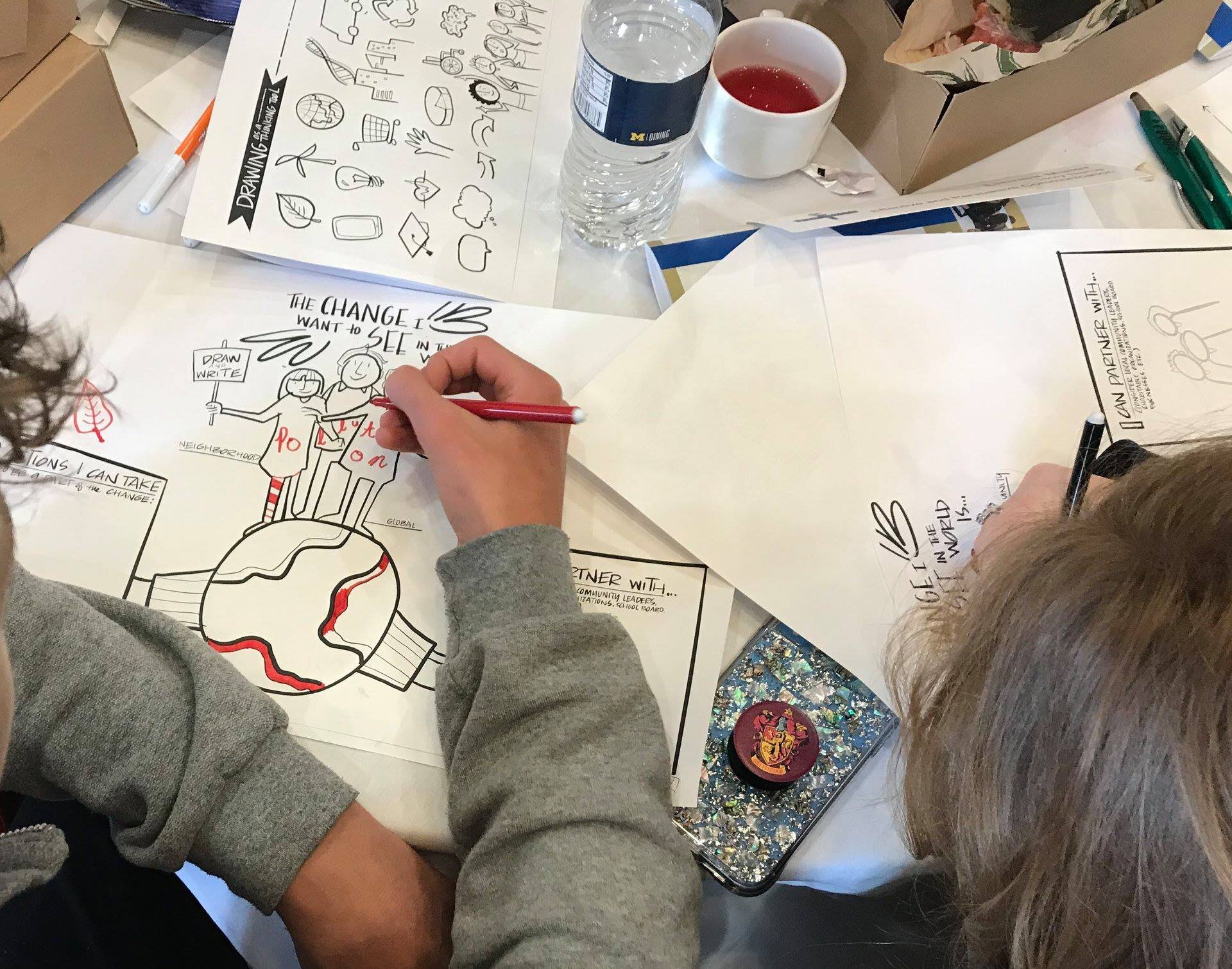Top Five Reasons to Add Visuals to Your Next Meeting
As project managers, consultants, or anyone who runs meetings already knows -- once you open up that text-filled PowerPoint presentation, you've lost your audience and productivity in your meeting plummets.
If you're not convinced that you need to incorporate visuals in your next meeting, here are our top five reasons why you should engage the creative side of your brain to take your meetings from 'bland' to 'grand.'
1. Build a more cohesive team
By graphically (or “visually”) recording the meeting, participants get to see the arc of their journey together over the course of a meeting or multi-day workshop, building a more cohesive team. Visuals allow themes to emerge. Participants can see where they've been, where they are going, and continue to build on that foundation as they move forward together.
2. Visuals create sticky memories for participants
A well-drawn image is a reinforcing tool that can help participants remember a particular conversation, key thought, or message thousands of times better than a quick statement or a few jotted-down notes. Images just access a different part of our brains!
3. Visuals create an engaging, inviting physical environment
Space matters. Why wouldn't you want a more engaging physical environment to work in? An inviting physical environment can increase creativity, feelings of safety, and collaboration. In addition to graphic recording, try these ways to incorporate visuals in your meetings:
Create a visual agenda
Use visuals as brainstorming tools (search images online and order 4x6 prints from your favorite printing service)
Create an interactive graphic to take the 'temperature' of the room at the mid-point or end of the meeting
4. Visuals help communicate beyond the meeting space
When was the last time you devoured those neatly typed meeting notes your colleague shared? [Don't answer that; no need to incriminate yourself!] We're all in meetings where very important information grows–we make commitments, we discuss work completed or action steps to move forward—but we don't like to read about it in a bulleted text list.
5. Visuals increase group engagement
Get your participants in the room, huddled around a table and working together on visual templates and you have an automatic shift in the type of conversation that's taking place. Using visual templates allows your meeting participants to engage differently, as opposed to sitting back and talking at one another. People are pulling information out from one another in a different way.
Visuals —whether they are visual reports/narratives, creative or out-of-the-box visual communications, or visual templates, to name a few—allow you to communicate information beyond meeting participants and outside the scope of the meeting. Use a card deck app to communicate corporate culture behavior or communicate themes, ideas, and action steps to people who weren't in the room. The conversation can continue long after the meeting ends if you incorporate visuals.
You can implement any of these tools on your own; they don't have to be complicated! Just start small. Commit to one new way you can incorporate a visual at your next meeting. And if you ever need help with graphic recording, contact us! We love helping clients shift their thinking and increase productivity in their workshops and meetings.




